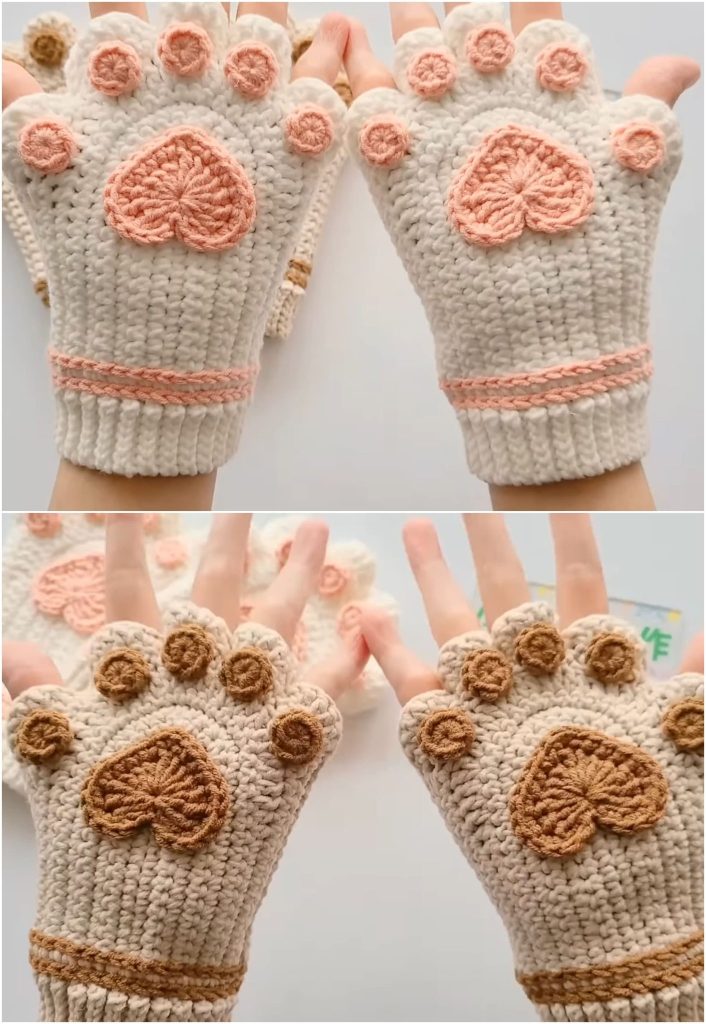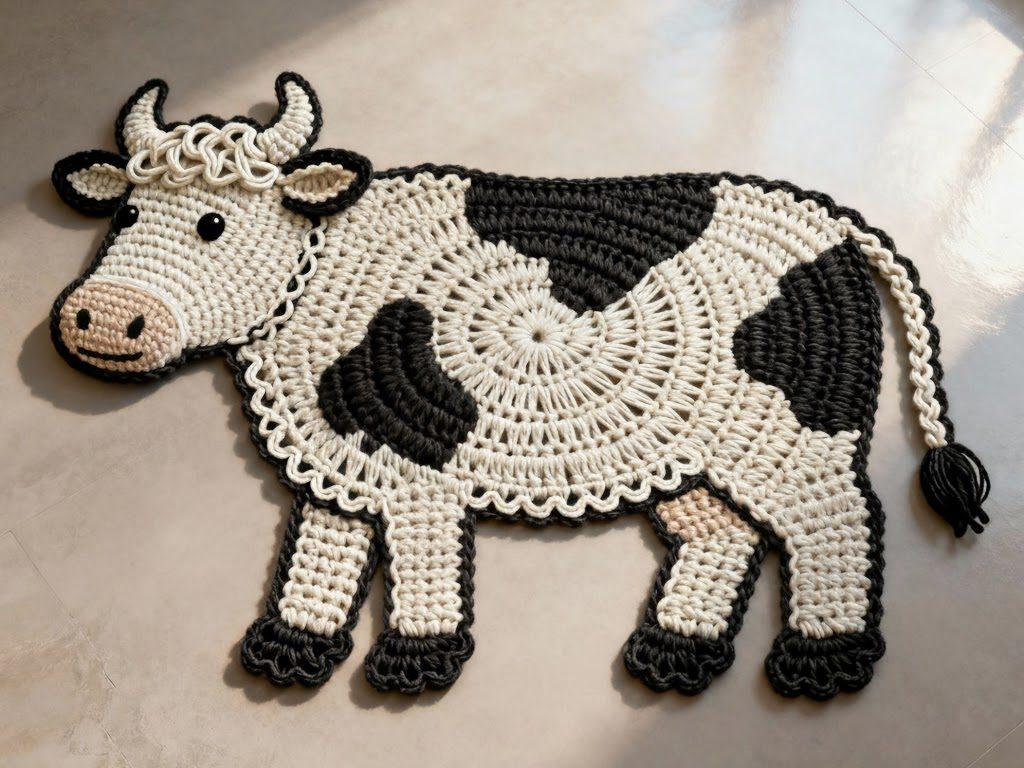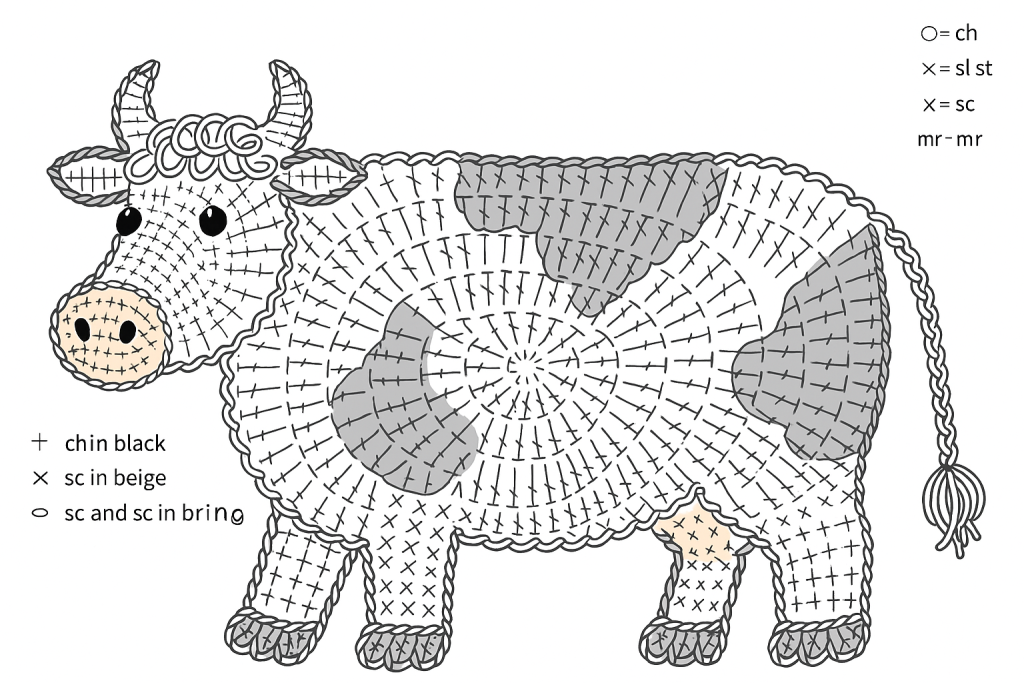
The Cow Rug Crochet Pattern is one of the most charming and creative home decor projects you can make using yarn. If you love unique and cozy pieces that add a touch of personality to any room, this pattern is an amazing choice. It brings together the softness of handmade crochet with the playful look of a cow print rug — perfect for nurseries, living rooms, or even as a special gift. Whether you are a beginner or an experienced crocheter, this pattern is both fun and rewarding to create.
Creating your own cow rug crochet pattern allows you to explore different yarn textures, colors, and stitch combinations. The black and white patches typical of a cow design can be customized in any way you like. Some crocheters even experiment with pastel tones or natural shades to match modern or rustic home decor styles. The beauty of this crochet project is that it combines creativity with practicality, turning a simple rug into a piece of art.
Beyond its aesthetic appeal, the cow rug crochet pattern is also an excellent way to practice essential crochet skills, such as color changes, shaping, and pattern reading. It’s a pattern that helps you grow your technique while producing something functional and adorable. In this guide, we will go step-by-step through the process of making your own crochet cow rug, from selecting materials to assembling the final product. Let’s dive in and explore how to bring this cute and cozy project to life.

When starting your cow rug crochet pattern, choosing the right materials is essential for achieving both the look and durability you want. The yarn type, hook size, and even the color palette all play important roles in the final appearance and texture of your rug.
Start with yarn that is soft but durable. Cotton or a cotton-acrylic blend is ideal because it’s sturdy enough for a rug while remaining comfortable underfoot. Acrylic yarns are also great for easy washing and vibrant colors. Pick shades of white, cream, and black to mimic a natural cow print, but feel free to experiment with pastel or earthy tones if you want a modern twist on the classic pattern.
The next key element is the crochet hook. A size between 5mm and 6mm works well for medium-weight yarn, but you can adjust according to your yarn label or desired texture. A larger hook will create a looser, softer rug, while a smaller one will make it denser and more compact.
You’ll also need basic crochet tools: scissors, a yarn needle for weaving in ends, and stitch markers to help you keep track of your rounds or sections. Some crocheters like to add a non-slip backing to their rugs, especially if it will be placed on a hardwood or tile floor. This extra step helps ensure safety and stability.
Finally, consider preparing your workspace before you start. Crochet projects like rugs can take up a bit of space, so make sure you have a clean, flat area to spread out your work as it grows. A comfortable chair, good lighting, and organized materials make the process smoother and more enjoyable.
Once your materials are ready, it’s time to move on to the most exciting part — crocheting the actual cow rug!
The cow rug crochet pattern can be made in various shapes, but most crafters prefer a circular or oval design that mimics the natural, organic shape of a cowhide rug. This section will guide you through the basic steps to achieve that adorable cow-inspired look.
Begin by crocheting a base circle using your main color (usually white or cream). You can use a magic ring to start, followed by double crochets to expand the circle evenly. Continue increasing in each round until your rug reaches the desired size. This creates a solid base for your cow pattern.
Once the base is ready, it’s time to add the cow patches. These are created separately using black or dark brown yarn. Crochet irregular shapes — ovals, blobs, or free-form patches — to give your rug a natural appearance. After completing the patches, sew or crochet them onto the white base.
Adding borders is optional but highly recommended. A simple single crochet or crab stitch border in black can frame the rug beautifully and prevent curling. It also gives your finished piece a polished, professional look.
Throughout your work, remember to maintain consistent tension. This keeps your rug even and prevents it from becoming wavy or uneven. If you notice curling or stretching, block your rug by dampening it and laying it flat to dry.
Once your rug is assembled, weave in all loose ends with your yarn needle. If you plan to use it on smooth flooring, attach a non-slip pad or apply a rug grip spray to the bottom. This ensures both safety and durability for everyday use.

The beauty of the cow rug crochet pattern is how versatile it can be. With just a few creative tweaks, you can adapt the pattern to suit your personal taste and interior style.
If you prefer a more minimalist design, use soft neutrals like beige, gray, or cream instead of the traditional black-and-white combination. This creates a subtle, modern rug that blends seamlessly with Scandinavian or boho interiors. For a child’s room, pastel shades such as baby pink, mint, or light blue can make the cow rug look playful and cozy.
You can also experiment with texture. Try using fluffy yarn for the patches to create a 3D effect, or mix different yarn weights for a rustic look. Some crocheters even add embroidery details or applique hearts, flowers, or initials to personalize the rug further.
Size customization is another option. A small cow rug looks perfect beside a baby’s crib or as a cute bathroom mat, while a larger version makes a striking statement piece in the living room. Simply adjust the number of increase rounds in your base to make the rug bigger or smaller.
If you want your rug to last for years, choose durable yarns and secure your stitches tightly. Applying a fabric stiffener or adding a lining can help maintain the rug’s shape over time. For easy cleaning, pick machine-washable yarn and avoid using materials that shed.
Don’t hesitate to make your cow rug crochet pattern truly your own. Each handmade rug tells a story — your choice of colors, stitches, and details transforms a simple pattern into something unique and meaningful.
Once you’ve completed your cow rug crochet pattern, proper care is key to keeping it soft, clean, and beautiful for a long time. Crochet rugs are durable but do need gentle maintenance to preserve their shape and color.
Always check the yarn label for washing instructions before cleaning your rug. Most cotton and acrylic yarns can be hand-washed or machine-washed on a gentle cycle with cold water. Avoid using bleach or harsh detergents, as these can fade your colors.
After washing, reshape the rug carefully and lay it flat to dry. Hanging it may stretch the stitches, causing the rug to lose its form. For larger rugs, drying them on a towel or mesh rack can help air circulate evenly and prevent damp spots.
Vacuuming your rug regularly helps remove dust and debris. If it’s a smaller rug, shaking it outdoors is an easy way to freshen it up. To prevent slipping, reapply a non-slip backing every few months if needed.
If your rug starts to curl at the edges, simply dampen it and block it again. Blocking helps reset the fibers, allowing your rug to lie flat. For stubborn curls, steam lightly with an iron (without pressing directly) while shaping it by hand.
With these care tips, your cow rug crochet pattern will remain a charming highlight in your home decor — soft, stylish, and full of handmade love.
1. Is the cow rug crochet pattern beginner-friendly?
Yes! It’s perfect for beginners who know basic stitches like single crochet, double crochet, and slip stitch. The cow patches are simple and can be made in freeform shapes.
2. How much yarn do I need for a cow rug?
For a medium-sized rug (about 3 feet wide), you’ll need roughly 600–800 grams of yarn — mostly white, with smaller amounts of black or brown for the patches.
3. Can I make the cow rug using chunky yarn?
Absolutely! Chunky yarn creates a thicker, softer rug and works up more quickly. Just remember to use a larger crochet hook to match your yarn weight.
4. How do I stop my crochet rug from curling?
If your rug curls, make sure you are increasing correctly in each round and not pulling the stitches too tightly. Blocking the rug after finishing helps it lay flat.
5. Is it safe to use crochet rugs on hardwood floors?
Yes, but it’s best to add a non-slip pad or backing underneath to prevent sliding, especially in high-traffic areas.
6. Can I wash my crochet cow rug in the washing machine?
Yes, if your yarn is machine-washable. Use cold water and a gentle cycle, then lay it flat to dry to maintain its shape and texture.
The Cow Rug Crochet Pattern is more than just a crochet project — it’s a fun, creative way to bring warmth, charm, and personality to your home. With simple materials, customizable designs, and easy maintenance, this pattern offers endless possibilities for both beginners and experienced crafters.
From choosing the perfect yarn to adding your personal touches, every step of making a crochet cow rug is an opportunity to express creativity and enjoy the relaxing art of crochet.
If you’ve tried this project or plan to make one soon, leave your honest opinion and suggestions. Your feedback helps inspire new ideas and improvements for future crochet tutorials.
